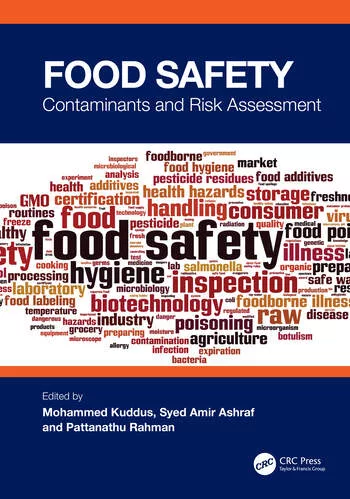Leveraging Food Safety: The Cross-Functional Food Safety Committee

Many companies struggle with the transformation from food safety compliance to food safety culture. While there are many programs and tools that can help a company make this change, one of the best ways is through transparency and collaboration. This involves not just collaboration with those on the frontline but also engagement of the entire organization at multiple levels. One great strategic tool is the food safety committee.
Identifying the Food Safety Committee
While food safety committees typically include representation of departments that identify and correct issues, food safety is everyone’s job and essential departments are frequently left out of this effort. My company was one that struggled to bridge the gap between checking off the box and making food safety a culture. Our food safety committee helped us make the transition. Initially, this committee was composed of individuals from operations, maintenance, quality assurance and sanitation, and the goal was to review internal audit observations, identify corrective actions, identify responsibilities for actions and document completion dates. The information was shared within this group without transparency to the entire organization.
As the organization began implementation of the Global Food Safety Initiative (GFSI) scheme Safe Quality Food (SQF), the criteria for management review and responsibility helped provide the foundation to restructure the committee. During the SQF program building, the team decided to expand the group for increased transparency, with much of the expansion championed by the owner and president. The committee expanded to include human resources, R&D, customer service and senior management. The content expanded to include a review of the SQF program and its components, including Hazard Analysis and Critical Control Points (HACCP), allergens, pest control, complaints, traceability and food defense. Over time, the meetings began to include additional departments, including sales, marketing, regulatory, training, controller, the CFO and the CEO. Inclusion of the CFO and CEO made requests for capital investments much easier, as both individuals were privy to the details and impact of these requests. As food safety, the GFSI and the Food Safety Modernization Act (FSMA) have progressed, so has the food safety committee: We now utilize a PowerPoint presentation during discussions to include U.S. Food and Drug Administration-mandated recalls, FSMA, foreign material findings, training, food defense and relevant food safety news.
As the food safety committee evolved, the importance of food safety was being communicated as a commitment from the top down. Decisions for new products, equipment and structural improvements were all being considered with food safety in mind. Food safety is now on everyone’s minds: Associates make inquiries based on food safety before starting a task and identify areas for improvement. Involving senior leadership and departments not thought to be integral to food safety such as marketing and sales in the food safety committee strengthens the organization, allows for transparency/collaboration and keeps open lines of communication.
Creating a multifaceted food safety committee does not happen overnight; it requires time, effort, patience and commitment. The best strategy is to start with a small group and determine achievable objectives. Once goals are established, evaluate which departments will best support their purpose. There is a significant time commitment by the team as a whole—time to organize the team, time to assemble and organize data, time to format the information for presentation and the time that the team will commit for discussion of the topics and issues. This is not simply presenting corrective and preventive actions (CAPAs) and assigning responsibilities; it is also the state of the union for food safety and regulatory departments within the organization globally.
Organizing the Food Safety Committee
One of the first steps in the organization of a food safety committee is assembling pertinent members. This preliminary team reviews the topics designated by a GFSI scheme for management review and analyzes CAPAs. The initial team should include upper management, including the CFO, CEO and operations. Including these individuals early on will demonstrate commitment to food safety initiatives within the organization and allow direct engagement with decision makers for program investments. As the committee expands to include other departments, a direct dialogue regarding current labeling laws, regulatory changes and topics in formulation for food safety as well as education of other team members on these subjects results. Additionally, as other department representatives (e.g., from customer service, procurement, human resources, finance and information services) are added, committee members become more knowledgeable about the impact of food safety topics and issues, and can anticipate potential consequences of lapses in process food safety. Some of the inquiries that might arise during these discussions could be:
• How do we source/replace an ingredient that is in limited supply or involved in a recall?
• How would such sourcing impact production?
• How would the ingredient impact the customer?
• How do labeling laws affect product packaging and labels?
• What lots or products are affected by product complaints?
• What can cause an increase/reduction in foreign material findings?
• How can improvements in a specific area of food safety (e.g., pest control) affect production?
• How do these improvements compare with last month or last year?
• How is a checkweigher or metal detector networked within the process?
By expanding the food safety committee membership, the team evolves from a “What is quality/food safety doing” about a food safety issue to a collaborative, more proactive effort that engages the entire organization.
The Agenda of the Committee
Once the initial team is identified and organized, the next step is to develop the preliminary agenda for the meeting. The information does not have to include every program but should include those with the most impact; the agenda can be expanded as the team evolves. Utilize GFSI programs as a template for what programs to initially include. The SQF program specifically outlines items to review as well as frequencies in 2.1.3 Management Review. The topics include audit findings, CAPAs, complaints, HACCP and follow-up actions from previous reviews. Often, it is beneficial to distribute CAPA information before the meeting, as those responsible for actions can update the list, provide the status for tasks and request additional resources. This step will streamline the meeting. Complaints can be included in the context of the CAPAs as well as the inclusion of graphing and trending as a snapshot, showing gaps in food safety processes. After a few months, the initial data presented are streamlined and prerequisite programs that support HACCP can be expanded as stand-alone topics rather than lumped in with HACCP or the internal audit parameter. The agenda will start to include content for pest control, allergen management, traceability, foreign material findings, food defense and training. The content for these programs can include monthly progress reports as well as compliance with food safety and usually begins a great dialogue within the team as to how to improve. In time, other relevant food safety topics such as regulatory issues, labeling laws and current FDA recalls can be included in the agenda. These topics will allow the facilitator to get “the most bang for the buck,” as they reinforce the impact and consequences of not following food safety protocols as well as serving as a “What Not to Do” list. The agenda will also highlight the financial impact to the company and the damage to its image/brand as well as public perception of the industry as a whole in cases where food safety lapses occur.
In summary, utilizing a food safety committee that involves senior leadership and expanded agenda topics helps transform an organization from having a “checking the box,” “making sure tasks are completed” mindset to one that embodies a true food safety culture.
Joyce L. Watford, M.B.A., is the director of food safety & regulatory affairs at The Eli’s Cheesecake Company.
Looking for quick answers on food safety topics?
Try Ask FSM, our new smart AI search tool.
Ask FSM →








